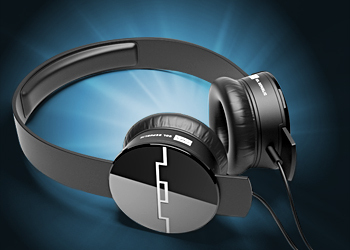Silent Ninja or Open Air? Choosing Your Podcast Headphones

 Sep 3, 2025
Sep 3, 2025
 Podcast
Podcast
When it comes to creating a great podcast, most people focus on microphones, mixers, and fancy editing software. But one of the most overlooked pieces of podcast recording equipment is surprisingly simple: your headphones. Whether you're editing episodes for hours or monitoring your voice during a live session, the right headphones for podcasting can make all the difference.
In the headphone world, two terms often come up: closed-back headphones and open-back headphones. These might sound like boring technical jargon, but choosing between them could shape the way you hear (and deliver) your content. Let’s break it down in today’s blog, and help you decide whether you’re a Silent Ninja or an Open Air enthusiast.
Closed-Back Headphones: The Silent Ninja
If you’ve ever seen musicians in a recording studio, chances are they were wearing big, chunky closed-back headphones. Why? Because these headphones are masters of isolation. The design of closed-back headphones prevents sound from leaking out and blocks outside noise from coming in.
For podcasters, this means you get a clean, focused listening experience. You can hear every breath, every slight pop, and every unexpected background noise. This makes them an ideal choice if you’re recording in noisy environments or want to avoid sound bleeding into your microphone.
Advantages of closed-back headphones for podcasting:
- Excellent noise isolation
- Prevents audio leakage into the mic
- Ideal for editing and detailed monitoring
- Helps you catch small audio imperfections during recording
However, this ninja-like silence comes at a cost. Closed-back headphones can sometimes feel a bit claustrophobic during long editing sessions. They also tend to have a tighter soundstage, meaning the audio feels more "in your head" rather than spacious.
Open-Back Headphones: The Open Air Experience
On the flip side, we have open-back headphones. These headphones have a more breathable design, allowing air and sound to pass through the ear cups. As a result, they deliver a more natural and spacious listening experience.
When using open-back headphones, you’ll notice that the sound feels more like listening to speakers in a room rather than being trapped inside your head. This makes them a favourite among audio purists and mixing engineers who want an accurate representation of sound.
Advantages of open-back headphones for podcasting:
- Wide, natural soundstage
- Comfortable for long sessions
- Less ear fatigue
- Better for mixing and critical listening
But there’s a catch (there’s always a catch!). Open-back headphones do not block external noise, and they also leak sound. If you’re recording and monitoring your audio live, that leaked sound can sneak into your microphone. Plus, if you live in a noisy environment, external sounds might distract you while editing.
So, Which One Should You Choose?
The answer depends on your podcasting style and environment.
Go for closed-back headphones if:
- You often record and monitor live at the same time.
- You want to avoid any chance of audio leaking into your mic.
- Your recording space has background noise.
- You need to focus deeply on detailed editing without distractions.
Choose open-back headphones if:
- You primarily use headphones for post-production and mixing.
- You work in a quiet environment.
- You prefer a more natural, open listening experience.
- You want comfort during long editing sessions.
A Few Extra Tips
When shopping for headphones for podcasting, don’t forget to consider comfort, weight, and cable type. You’ll likely be wearing them for hours, so a heavy or tight fit could turn into a real headache — literally.
Also, remember that your podcast recording equipment isn’t just about fancy gear; it’s about choosing what helps you deliver the best sound to your listeners.
Final Thoughts
Your choice between closed-back headphones and open-back headphones isn’t just a technical decision — it’s a personal one that reflects how you like to work and hear your world. Whether you’re the silent ninja type who wants total isolation or the open air type who enjoys a spacious soundscape, the right headphones will make your podcasting journey much smoother (and way more fun).
So, next time you’re hunting for the best headphones for podcasting, remember: Are you a Silent Ninja or an Open Air enthusiast? Whichever path you choose, your ears — and your listeners — will thank you.
